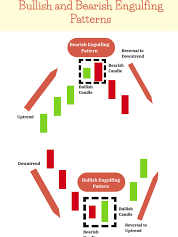Introduction
Candlestick formations are fundamental to technical analysis, providing traders with insights into market sentiment and potential price movements. Understanding basic candlestick formations can help you make more informed trading decisions. This article will cover some of the most essential candlestick formations and how to use them for successful trading.
What Are Candlestick Formations?
Candlestick formations are patterns created by the arrangement of individual candlesticks on a chart. Each formation provides information about market sentiment and potential price movements. Key formations can indicate potential reversals, continuations, or consolidations.
Key Candlestick Formations
1. Doji Formation A Doji candlestick has a small body with long wicks on either side, indicating market indecision. It can signal potential reversals or continuation patterns.

- Types: Standard Doji, Gravestone Doji, Dragonfly Doji.
- Usage: Look for confirmation from subsequent candlesticks or technical indicators.
2. Hammer and Hanging Man The Hammer has a small body at the top with a long lower wick, suggesting a potential bullish reversal after a downtrend. The Hanging Man has a similar shape but appears after an uptrend, indicating a potential bearish reversal.

- Usage: Confirm with additional bullish or bearish signals.
3. Engulfing Patterns Engulfing patterns involve two candlesticks where the second candle completely engulfs the body of the first. A Bullish Engulfing pattern signals a potential reversal from a downtrend, while a Bearish Engulfing pattern indicates a potential reversal from an uptrend.

- Usage: Confirm with subsequent price action and volume.
4. Morning Star and Evening Star The Morning Star is a three-candlestick pattern indicating a potential bullish reversal, while the Evening Star signals a potential bearish reversal. Both patterns include a small-bodied candlestick between a large bullish and bearish candle.

- Usage: Look for confirmation with follow-through candlesticks and increased volume.
5. Shooting Star and Inverted Hammer The Shooting Star has a small body at the lower end with a long upper wick, indicating a potential bearish reversal. The Inverted Hammer has a similar shape but appears after a downtrend, suggesting a potential bullish reversal.

- Usage: Confirm with additional bearish or bullish signals.
Trading Strategies with Candlestick Formations
Setting Entry Points:
- Reversal Patterns: Enter trades when confirming signals from subsequent candlesticks or technical indicators.
- Continuation Patterns: Enter trades based on the continuation of the existing trend.
Setting Exit Points:
- Profit Targets: Set profit targets based on support or resistance levels.
- Stop-Loss Orders: Use stop-loss orders to manage risk and protect against adverse price movements.
Risk Management:
- Position Sizing: Adjust your position size based on risk tolerance and the distance between entry and stop-loss levels.
- Diversification: Combine candlestick formations with other technical analysis tools for a more comprehensive strategy.
Conclusion
Understanding basic candlestick formations is essential for successful trading. By recognizing these patterns and integrating them into your trading strategy, you can improve your ability to make informed decisions and enhance your overall trading performance.
you may be interested in this blog here:-
Full Stack Development Salary in India – 2024 Trends and Insights
Salesforce Developer Salary in India An In-Depth Analysis




